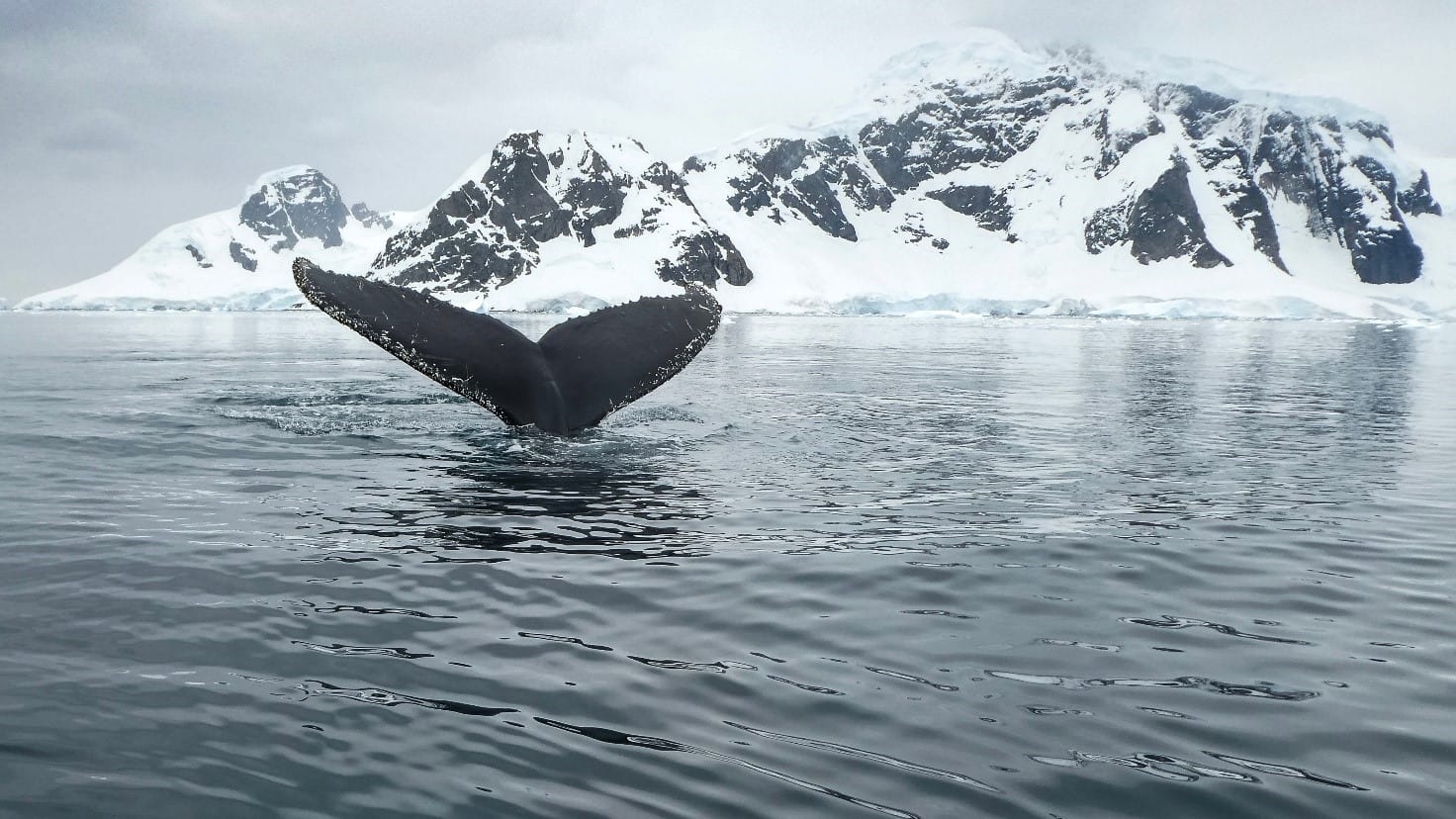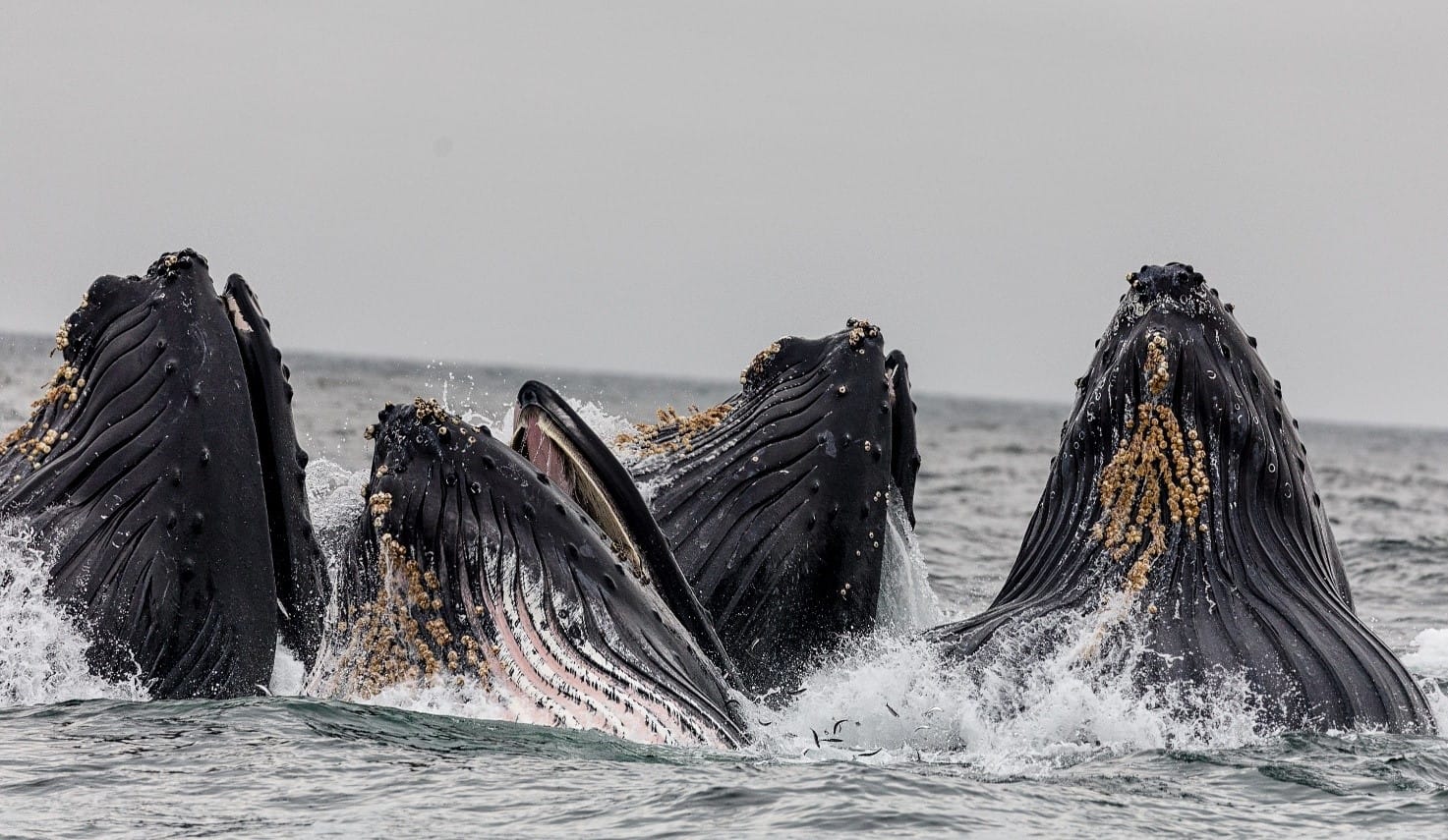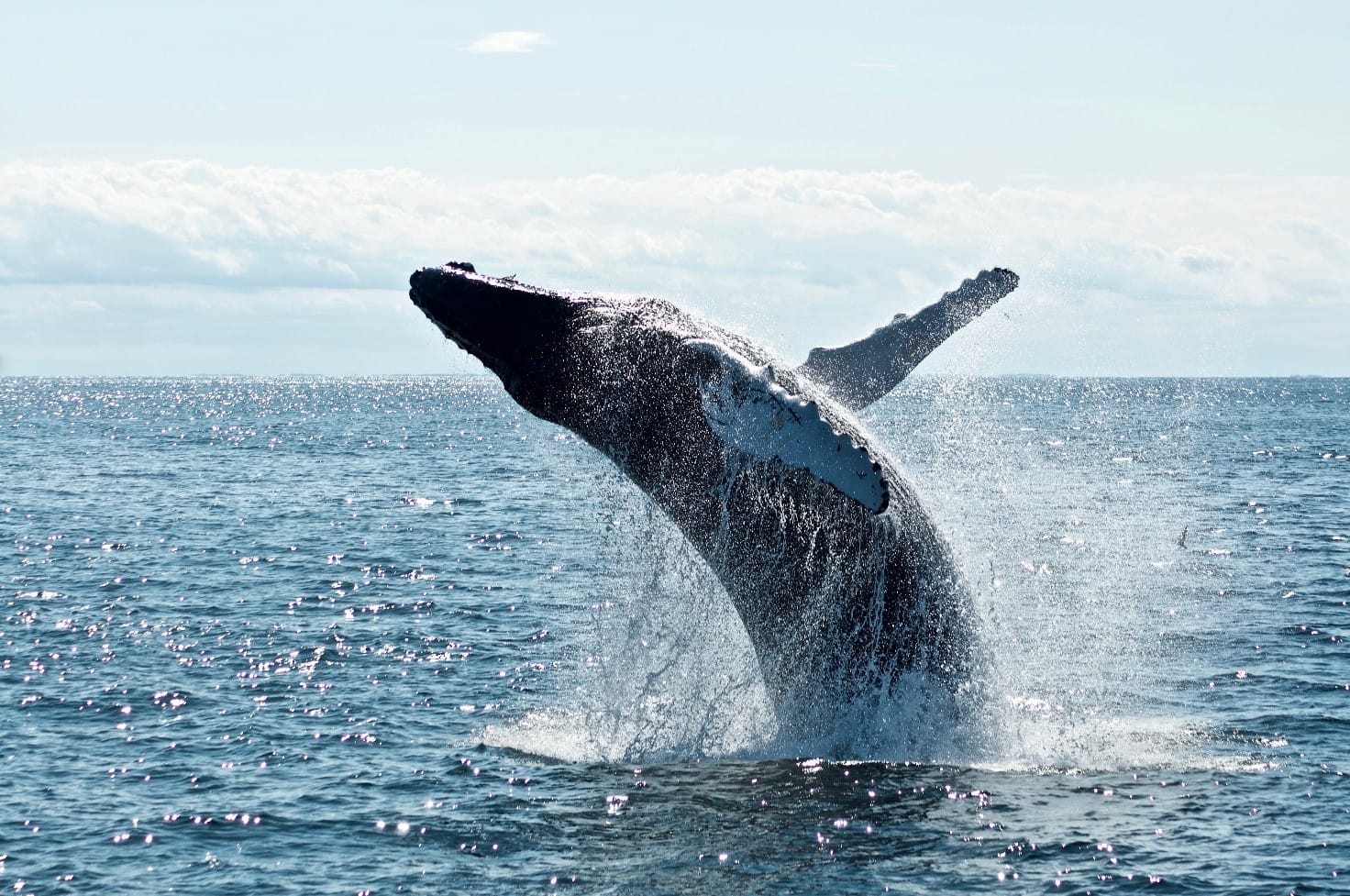Aqua Map Blog
"Whales, one of the most majestic creatures in the world"
2021, August 20th
Whales evolved from land mammals that lived in warm salt waters about 55 million years ago and are mammals just like us.
Just like us they breathe air, have hair, are warm blooded, give birth and feed their young with milk.
Babies can stay with their mothers for up to ten years, depending on the species, and travel with them thousands of miles across the ocean.
So far, around 90 species of whales, dolphins and porpoises have been classified, which together represent "the world of cetaceans", although scientists are still discovering new species and subspecies.
There are two different types: toothed whales (odontoceti) and fin whales (mysticeti).
Odontocetes, most of the cetaceans, are endowed with teeth, but they can also have fangs, or a long spiral horn and can include small cetaceans such as "porpoise" and "dolphins" up to "the sperm whale" (one of the larger) and to the orca which is not a whale, but the largest dolphin in the world, also known as the killer whale.
They share a sophisticated sonar system called echolocation, which helps them find their prey, typically consisting of fish, squid, and octopus (some killer whales also eat sharks and other marine mammals).
Mysticeti have baleen instead of teeth, a series of inclined plates made of keratin, the same material that makes up our nails, which are used to filter out plankton, krill and school fish.
Fin whales are generally classified into 3 sub-categories, based on how they get their food.
Skimmers feed on tiny plankton, swim with their mouths open as the water flows and is filtered through the baleen.
Gulpers, like blue whales and humpback whales, eat using a series of folds ranging from the lower jaw to the navel that expand as they fill with water, catching fish or krill.
Suckers, like gray whales, find their food, literally sucking mud and food from the seabed.
Whale migration
A feature of the whales is the migratory nature and in particular the humpback whale provides a perfect example of the typical journey these cetaceans make every year.
They travel up to 3,000 miles from their feeding grounds in the cold waters of the polar regions, to their spawning grounds in the warmer waters of tropical regions.
During the polar summer, they feed on plankton and small fish, but as temperatures begin to drop, they move to tropical seas to mate and reproduce, swimming many thousands of kilometers to and from tropical breeding grounds.
Photo: Derek Oyen (year 2019)
The Antarctic feeding season typically lasts 80-100 days in spring and summer. The krill eaten by whales in the summer is converted into a huge reserve of fat, which sustains the whales for the next ten months.
Whales meet their need for food and suitable calving areas by traveling long distances from cold feeding areas, to warm, shallower waters…the main reason humpbacks travel to these warmer locations is not to feed, but to begin the breeding process.
Because seasons are reversed on either side of the equator, northern and southern hemisphere populations of humpbacks probably never meet.
Those in the north travel to their breeding grounds in tropical waters while those in the south travel to the pole to feed and vice versa.
Throughout its life, a humpback whale swims a distance equivalent to the moon and comes back.
Photo: Vivek Kumar (year 2017)
One of the most impressive characteristics of humpback whales is that they "sing" underwater, making sounds that are thought to serve as communication with other individuals: sequences of moans, howls, screams and other noises are quite complex and often continue for hours. the male humpback whale in particular is famous for its extraordinarily long and complex songs that travel very far across the oceans.
Best Places For Whale Watching
The opportunities (and especially the places) to see whales in their natural habitat throughout the year are many.
In Canada, from June to September it is possible to meet them at Saguenay - St. Lawrence Marine Park, Québec, where whales go in order to feed and build their energy reserves for the long migrations ahead.
In Mexico, from January to March, at Baja California Sur, one of the most beautiful seas in the world, where whales gather to give birth and breed.
In New Zealand, from June to July, at Kaikoura, South Island.
In Greenland, from June to August, at Disko Bay.
In Hawaii, from Mid-January to Early April, at Maui, where Humpback whales start to arrive in these crystal clear waters in December, but peak numbers occur in mid-January.
In Costa Rica, at Marino Ballena National Park, where it is easy to meet Humpback whales, in two seasons: whales from the Northern Hemisphere are seen from December to March while those from the Southern Hemisphere are seen from early July to late October.
In Alaska, from June to Early September, at Glacier Bay National Park, where Humpback whales, after several months of fasting in the warmer waters of Hawaii, finally, can accumulate food for their next migration.
In Australia, from Mid-July to October, at Hervey Bay, where Humpback whales stop annually to be able to grow their young in the absence of predators.
In Antarctic Peninsula, from Mid-February to March, at Wilhelmina Bay, where, how happen also in Alaska, whales, come a few months each year to accumulate fat, eating krill.
Ready for sightings? Whales are waiting for you… are out there to surprise you with a super jump!
Photo: Todd Cravens (year 2019)
Just like us they breathe air, have hair, are warm blooded, give birth and feed their young with milk.
Babies can stay with their mothers for up to ten years, depending on the species, and travel with them thousands of miles across the ocean.
So far, around 90 species of whales, dolphins and porpoises have been classified, which together represent "the world of cetaceans", although scientists are still discovering new species and subspecies.
There are two different types: toothed whales (odontoceti) and fin whales (mysticeti).
Odontocetes, most of the cetaceans, are endowed with teeth, but they can also have fangs, or a long spiral horn and can include small cetaceans such as "porpoise" and "dolphins" up to "the sperm whale" (one of the larger) and to the orca which is not a whale, but the largest dolphin in the world, also known as the killer whale.
They share a sophisticated sonar system called echolocation, which helps them find their prey, typically consisting of fish, squid, and octopus (some killer whales also eat sharks and other marine mammals).
Mysticeti have baleen instead of teeth, a series of inclined plates made of keratin, the same material that makes up our nails, which are used to filter out plankton, krill and school fish.
Fin whales are generally classified into 3 sub-categories, based on how they get their food.
Skimmers feed on tiny plankton, swim with their mouths open as the water flows and is filtered through the baleen.
Gulpers, like blue whales and humpback whales, eat using a series of folds ranging from the lower jaw to the navel that expand as they fill with water, catching fish or krill.
Suckers, like gray whales, find their food, literally sucking mud and food from the seabed.
Whale migration
A feature of the whales is the migratory nature and in particular the humpback whale provides a perfect example of the typical journey these cetaceans make every year.
They travel up to 3,000 miles from their feeding grounds in the cold waters of the polar regions, to their spawning grounds in the warmer waters of tropical regions.
During the polar summer, they feed on plankton and small fish, but as temperatures begin to drop, they move to tropical seas to mate and reproduce, swimming many thousands of kilometers to and from tropical breeding grounds.

Photo: Derek Oyen (year 2019)
The Antarctic feeding season typically lasts 80-100 days in spring and summer. The krill eaten by whales in the summer is converted into a huge reserve of fat, which sustains the whales for the next ten months.
Whales meet their need for food and suitable calving areas by traveling long distances from cold feeding areas, to warm, shallower waters…the main reason humpbacks travel to these warmer locations is not to feed, but to begin the breeding process.
Because seasons are reversed on either side of the equator, northern and southern hemisphere populations of humpbacks probably never meet.
Those in the north travel to their breeding grounds in tropical waters while those in the south travel to the pole to feed and vice versa.
Throughout its life, a humpback whale swims a distance equivalent to the moon and comes back.

Photo: Vivek Kumar (year 2017)
One of the most impressive characteristics of humpback whales is that they "sing" underwater, making sounds that are thought to serve as communication with other individuals: sequences of moans, howls, screams and other noises are quite complex and often continue for hours. the male humpback whale in particular is famous for its extraordinarily long and complex songs that travel very far across the oceans.
Best Places For Whale Watching
The opportunities (and especially the places) to see whales in their natural habitat throughout the year are many.
In Canada, from June to September it is possible to meet them at Saguenay - St. Lawrence Marine Park, Québec, where whales go in order to feed and build their energy reserves for the long migrations ahead.
In Mexico, from January to March, at Baja California Sur, one of the most beautiful seas in the world, where whales gather to give birth and breed.
In New Zealand, from June to July, at Kaikoura, South Island.
In Greenland, from June to August, at Disko Bay.
In Hawaii, from Mid-January to Early April, at Maui, where Humpback whales start to arrive in these crystal clear waters in December, but peak numbers occur in mid-January.
In Costa Rica, at Marino Ballena National Park, where it is easy to meet Humpback whales, in two seasons: whales from the Northern Hemisphere are seen from December to March while those from the Southern Hemisphere are seen from early July to late October.
In Alaska, from June to Early September, at Glacier Bay National Park, where Humpback whales, after several months of fasting in the warmer waters of Hawaii, finally, can accumulate food for their next migration.
In Australia, from Mid-July to October, at Hervey Bay, where Humpback whales stop annually to be able to grow their young in the absence of predators.
In Antarctic Peninsula, from Mid-February to March, at Wilhelmina Bay, where, how happen also in Alaska, whales, come a few months each year to accumulate fat, eating krill.
Ready for sightings? Whales are waiting for you… are out there to surprise you with a super jump!

Photo: Todd Cravens (year 2019)







